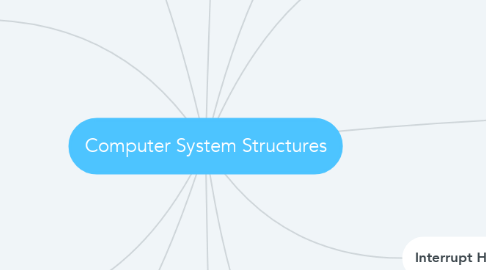Computer System Structures
Door Sim Jian Sheng


1. Storage Structure
1.1. Main memory is a volatile storage that only store large storage media that the CPU can access directly but the contents will be lost when power is turned off.
1.2. Secondary storage is non volatile storage that hold large quantities of data permanently.
2. Storage Hierarchy
2.1. Storage systems organized in hierarchy that is speed, cost, and volatility
2.2. Caching is copying information into faster storage system.
3. Dual-Mode Operation
3.1. In order to ensure the proper execution of the operating system, the computer system must be able to distinguish between the execution of operating system code and user-defined code.
3.2. User Mode
3.2.1. User program executes in user mode
3.2.2. Certain areas of memory are protected from user access
3.2.3. certin instructions may not be executed
3.3. Kernal Mode
3.3.1. monitor executes in kernel mode
3.3.2. privileged instructions may be executed
3.3.3. protected areas of memory may be accessed
3.4. Mode bit is added to computer hardware to indicate the current mode: kernel (0) or user (1).
3.5. privileged instructions can be issued only in monitor mode
4. I/O Protection
4.1. All I/O instructions are privileged instructions
5. computer system architecture
5.1. Each I/O device has their own controller.
5.2. Each device controller has a local buffer.
5.3. Each device controller is in charge of a specific type of device.
5.4. Interrupt indicates only in hardware or software.
6. Interrupt Handling
6.1. Interrupt Service routine
6.1.1. Part of the operating system which take action in response to the condition that caused the interrupt.
6.1.2. The fixed location contains the starting address of the interrupt service routine.

